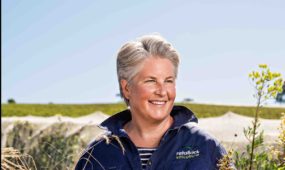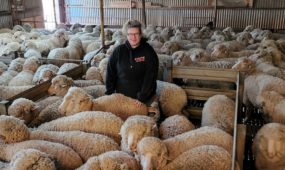Tomatoes watered by the sea: sprouting a new way of farming
Primary Industries
Tomatoes watered by the sea: sprouting a new way of farming

Sign up to receive notifications about new stories in this category.
Thank you for subscribing to story notifications.
Isn’t it remarkable that we recognise the fact that the world faces huge problems in terms of water, energy and food security – and yet we tend to tackle these as separate problems, as if they have no interconnections.
So here’s a radical idea. What if the world’s food, water and energy problems were tackled together, in a way that lowered costs and made the whole greater than the sum of the parts?
A project is taking shape in Australia that promises to take just such an approach. It’s very small in scale at the moment, and is limited to just fresh vegetables – but it does demonstrate great potential because of the links it builds between water, energy and food.
Food grown without oil or fresh water
At the top of the Spencer Gulf, near Port Augusta in South Australia, Sundrop Farms is turning sunlight and seawater into fresh water and food inside greenhouses.
An ABC TV Gardening Australia segment on Sundrop Farms, from September 2013.
Philipp Saumweber is a Harvard MBA, formerly of investment bank Goldman Sachs, who was struck by the basic idea that food needs to be produced in a very different way from how it largely is today. Currently, most agriculture relies heavily on using oil and adding fresh water – two of the most vulnerable resources on the planet – as well as overuse of fertilisers, herbicides and pesticides that damage the wider environment.
His response to that problem is Sundrop Farms. The concept is to turn sunlight and seawater (“sundrops”) into clean food, water and energy. It harnesses the sun’s energy to produce heat that is then used to desalinate seawater and supply freshwater to a greenhouse; to power the greenhouse with a linked concentrated solar power plant; and to produce the heat needed to warm (and cool) the greenhouse.
It is by linking these different components that their individual cost disadvantages can be overcome: for example, by shared power and heat production, and by linking thermal desalination to the heated oil produced by the solar power system.
The food produced is clean, uniform and produced with minimal use of pesticides, since the sterilised airflow reduces pest invasion and the location of the system in arid regions away from other agricultural activities also reduces the risk of invasion.
Scaling up from a greenhouse
Sundrop Farms now has a 0.2 hectare greenhouse area, producing 150 tonnes of tomatoes, cucumbers and capsicums a year. While still small by horticultural standards – supplying only a small number of South Australian stockists – it’s a promising start, with a reference yield of 750 tonnes per hectare per year.
The project is currently being scaled-up 100-fold to encompass a 20-hectare greenhouse complex, with associated desalination and concentrated solar power systems to produce 15,000 tonnes of fresh produce each year.
A development application is being submitted to the Port Augusta town council, along with arrangements to finalise details of the funding of the A$100 million project. Australia’s profitable “green investment bank”, the Clean Energy Finance Corporation (CEFC), is providing debt financing for up to A$40 million of the investment.
I briefly discussed Sundrop Farms in an article for The Conversation late last year on the CEFC, which is targeted to be scrapped by the Abbott government.
Since then I have examined the Sundrop project in more detail. As several Conversation readers have rightly commented, the Sundrop model is not a solution for every kind of agriculture.
It is clearly not going to replace broad acre farming for wheat or potatoes, or animal husbandry. Instead, it is most likely to work for growing fresh vegetables, then flowers, and possibly in the longer-run for some kinds of fish farming.
What it does demonstrate, as others have also said, is that there are smarter, better integrated solutions to difficult problems, such as fresh water scarcity and agriculture in arid areas.
Big potential, with constraints
Similar farms could be located anywhere there is an arid coastline: in Africa, the Middle East, Central and Latin America or parts of Asia. They could be located next to growing cities where there is access to seawater and sunshine – such as in China or Africa.
It seems to me that the concept looks most promising if it could be scaled up to the levels needed by China, which is rapidly urbanising and industrialising at the same time.
There are still some big challenges, including the costs of the produce and of transporting it to market. And to get the economies of scale needed to make it viable, you would need to have major retailers – like supermarkets – on-board as stockists.
Let’s be clear: there is no single answer for the world’s food needs. And there are still huge research challenges in reinventing food production in a crowded world.
But there are also vast entrepreneurial opportunities. So from an Australian perspective, it will be exciting to keep watching to see how the Sundrop Farms model works out.
John Mathews does not work for, consult to, own shares in or receive funding from any company or organisation that would benefit from this article, and has no relevant affiliations.
This article was originally published on The Conversation. Read the original article.
Sundrop Farms Pty LtdLot 680, Gade RoadPort AugustaSouth Australia 5700Australia
Phone: +61 8 8643 6171Email: info@sundropfarms.com
Jump to next article



